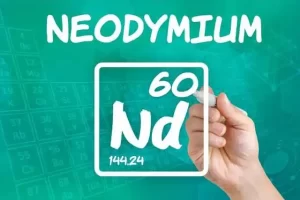What is Copper Flotation? Copper flotation is a process in mining used to separate copper minerals from the ore. This helps get pure copper from the ground. how copper flotation works, why it is important, and its benefits.
Why is pH Important in Copper Flotation?

The pH level of the slurry in copper flotation is very important. It affects how well the copper minerals separate from the waste rock. Here’s why:
- Effect on Reagents: Reagents are chemicals added to the slurry to help with the separation process. The pH level changes how these reagents work. For example, at the right pH, collectors (a type of reagent) stick better to copper minerals. This makes the copper particles more likely to attach to the air bubbles and float to the top.
- Copper Recovery Rates: The right pH helps recover more copper from the ore. Studies show that a pH between 9 and 10 is often best for copper flotation. At this pH, the copper particles separate well from the waste rock, leading to higher recovery rates.
- Quality of Concentrate: A good pH level also improves the quality of the copper concentrate.
- Mineral Selectivity: Different minerals respond differently to pH levels. By adjusting the pH, miners can make the process more selective for copper. This means that copper is more likely to float while other unwanted minerals stay in the slurry. This selectivity is crucial for separating copper from other minerals like pyrite.
- Cost-Effectiveness: Using the right pH can make the flotation process more efficient. This reduces the need for additional chemicals and energy, lowering the overall cost of copper production.
The Copper Flotation Process

Here are the copper flotation processes:
Here’s a simpler version of the process:
- Crushing and Grinding: Break the ore into small pieces and grind it into a fine powder.
- Mixing with Water: Mix the ground ore to make a slurry.
- Adding Reagents: Add chemicals to the slurry:
- Collectors: Help copper minerals stick to air bubbles.
- Frothers: Create froth to hold copper minerals.
- Modifiers: Adjust the pH for better results.
- Introducing Air Bubbles: Blow air into the slurry to create bubbles that copper minerals stick to.
- Froth Collection: Skim off the froth containing copper minerals.
- Concentrating the Froth: Further process the froth to increase copper concentration.
- Drying and Smelting: Dry the copper concentrate, heat it to remove impurities, and get pure copper.
This step-by-step process efficiently extracts and purifies copper from its ore, producing high-quality copper for various applications.
Advancements in Copper Flotation Technology

Copper flotation technology has seen many improvements over the years. These changes help make the process more efficient, cost-effective, and better for the environment. Let’s look at some key advancements:
1. Automation and Control Systems
Modern copper flotation plants use advanced systems that can monitor and adjust the process automatically. These systems help ensure the flotation process runs smoothly and increases the amount of copper recovered. They also reduce human errors, making the process more reliable.
2. Better Flotation Cells
Flotation cells are the tanks where the flotation process takes place. Newer designs of these cells are more efficient and can handle larger amounts of ore. These improved cells help copper particles stick to air bubbles better, increasing the recovery rate. They also use less energy, saving money.
3. Improved Reagents
Reagents are chemicals used to help separate copper from waste rock. Advances in reagent technology have led to more effective and selective chemicals.
4. Energy Efficiency
Using energy efficiently is crucial in copper flotation. New technologies focus on reducing the energy needed for the process. This includes using better motors, well-designed equipment, and optimized techniques. These improvements help lower costs and reduce the environmental impact.
5. Waste Management
Managing waste better has made the flotation process more sustainable. New methods for handling and reusing waste materials from the process reduce the amount of waste produced. This helps minimize the environmental impact of copper mining and makes the industry more sustainable.
6. Artificial Intelligence (AI) and Machine Learning
AI and machine learning are becoming more important in copper flotation. These technologies analyze data from the process and find patterns to optimize operations.
Importance of the Copper Flotation Process
The copper flotation process is crucial for several reasons:
- High Recovery Rates: It can recover up to 90% of the copper from the ore, making it very efficient.
- High-Purity Copper: The process produces high-grade copper concentrates, essential for producing high-quality end products.
- Cost-Effective: By efficiently separating copper minerals from waste rock, the process reduces the cost of processing and increases profitability.
- Environmental Benefits: Modern flotation processes use less water and energy, reducing the environmental impact of mining operations.
These steps and benefits highlight why copper flotation is a preferred copper flotation method for extracting copper from ore. The process is continuously being improved with advancements in technology to make it even more efficient and environmentally friendly.
Key Components in Copper Flotation

Here are the essential parts involved in the copper flotation process:
1. Reagents
Reagents are special chemicals added to the slurry to help separate copper minerals from waste rock. There are different types of reagents used:
- Collectors: These chemicals make the copper minerals hydrophobic (repel water), allowing them to attach to air bubbles.
- Frothers: Frothers create a stable froth layer at the top of the flotation cell, where the copper-rich froth can be collected.
- Modifiers: Modifiers adjust the slurry’s pH and help control the interaction between collectors and minerals, optimizing the separation process.
2. Flotation Cells
Flotation cells are large tanks where the separation process happens. The ore slurry is mixed with reagents, and air is blown into the mixture. Different designs of flotation cells exist, but they all serve the same purpose: to create bubbles that the copper minerals can attach to and float to the surface.
3. Air Bubbles
Air bubbles play a crucial role in the flotation process. The bubbles rise through the slurry and attach to the hydrophobic copper particles, lifting them to the surface to form a froth. This froth is then skimmed off, containing the concentrated copper minerals.
4. Concentrators
After flotation, the froth (now a concentrate) contains copper minerals mixed with waste. Concentrators further refine this concentrate, removing impurities and increasing the purity of the copper.
Benefits of Copper Flotation

Here are the key benefits:
- Excellent Recovery Rates
Copper flotation is highly efficient, recovering up to 90% of the copper from the ore.
- High-Quality Copper
The flotation process yields a high-grade copper concentrate, ensuring the extracted copper is of exceptional purity.
- Cost Efficiency
Copper flotation significantly reduces the cost of ore processing.
- Environmental Friendliness
Modern flotation techniques are designed to conserve water and energy, reducing the environmental footprint of mining operations.
- Adaptability
Copper flotation is versatile and can be tailored to different types of ores and mining conditions.
- Enhanced Safety
The flotation process can be automated and monitored remotely, minimizing the need for direct human involvement.
References:
- 911 Metallurgist – Effect of pH on Copper Flotation Recovery
- The Flotation Process – https://www.copper.org/education/history/60centuries/modern/theflotation.html
- Science Direct – Efficient Recovery of Copper – https://www.sciencedirect.com/science/article/abs/pii/S0959652624014239
- MDPI – Optimization of Copper Recovery – https://www.mdpi.com/2075-163X/14/1/36
In conclusion, copper flotation is very important in mining. It helps get high-quality copper. With new technology and better methods, this process is getting even better. These improvements make copper flotation more efficient and less harmful to the environment. By learning and improving each step, mining can get more copper and make better products. Copper flotation will keep being important in the future.



